If you want to know about the history of tall building or impact of tall building or scale in architectural, please click the link.
Building services in tall buildings refer to the systems and components that are necessary for the proper functioning of a building’s infrastructure. These systems include mechanical, electrical, plumbing, and other services required to support the occupants and their activities in the building.
- Imagine yourself in the most fabulous building in the world. Now take away the lighting, heating and ventilation, the lifts and escalators, acoustics, plumbing, power supply and energy management systems, the security and safety systems…and you are left with a cold, dark, uninhabitable shell.
- Everything inside a building which makes it safe and comfortable to be in comes under the title of Building Services‘. A building must do what it was designed to do – not just provide shelter but also be an environment where people can live, work and achieve.
Building services are “what makes a Building come to life”. . . .
They include:
- energy supply -gas, electricity and renewable sources
- heating and air conditioning
- water, drainage and plumbing
- natural and artificial lighting, and building facades
- escalators and lifts
- ventilation and refrigeration
- communication lines, telephones and IT networks
- security and alarm systems
- fire detection and protection
1) Service
Simply state that service is defined as those part of a building that consists of the service lift, fire stair, Toilet, M&E service riser duct.
2) Element of service
- Toilet
- Fire Stair.
- Service/Fire Elevator
- Riser Duct
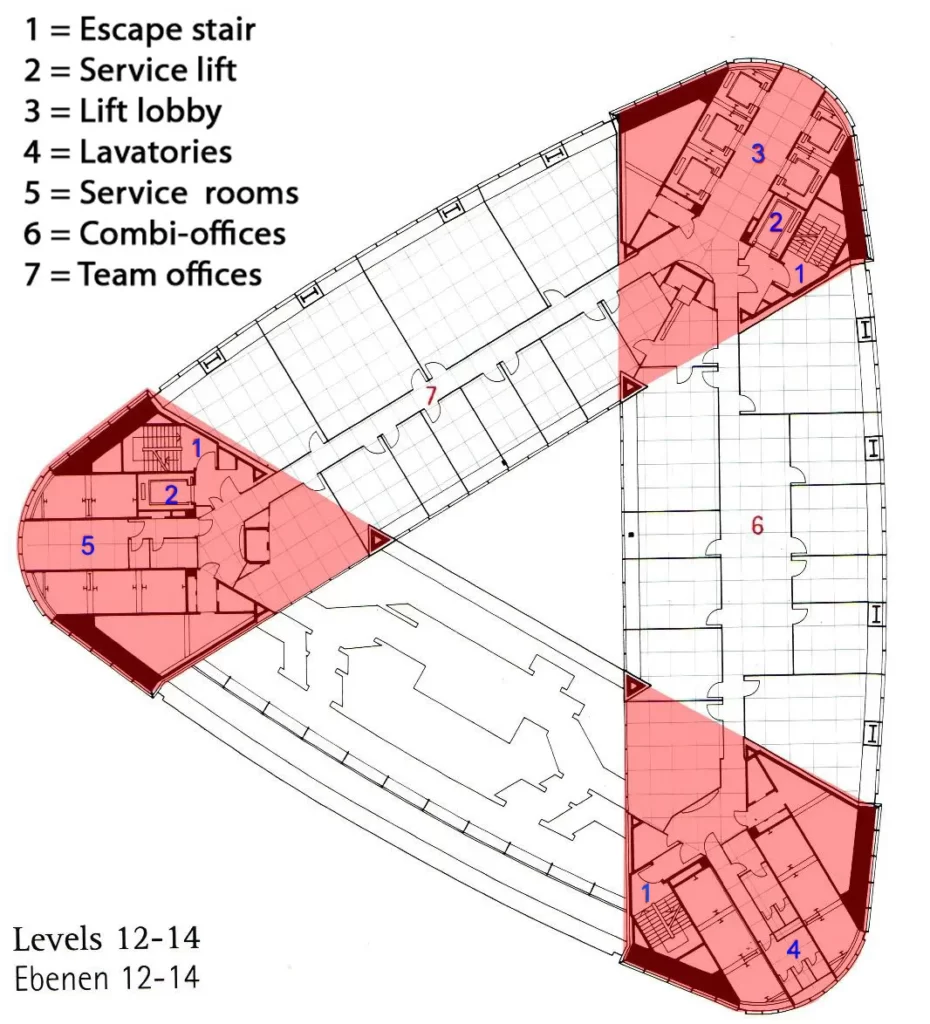

3) Plumbing
- Plumbing is the system of pipes, drains, fittings, valves, and fixtures installed for the distribution of potable water for drinking, heating and washing, and waterborne waste removal. “Plumbing” also refers to the skilled trade which installs and maintains it.
- The plumbing industry is a basic and substantial part of every developed economy. The word derives from the Latin plumbing for lead, as the first effective pipes used in Roman era were lead pipes.
- “Plumbing” often denotes the supply and waste system of an individual building, distinguishing it from water supply and sewage systems that serve a group of buildings.
Plumbing System
- The major categories of plumbing systems or subsystems are:
- potable cold and hot tap water supply
- plumbing drainage venting
- sewage systems and septic systems with or without hot water heat recycling and gray water recovery and treatment systems
- Rainwater, surface, and subsurface water drainage [relevant? – discuss]
- fuel gas piping
- hydronic, i.e., heating and cooling systems utilizing water to transport thermal energy, as in district heating systems, like for example the New York City steam system.
4) Ducted Distribution of Services
- Service Duct require careful planning and should be considered at an early stage in the design of a building.
- Accommodation of the plant and the layout of services are the two essential factors in design.
- It is usual to need some 7 – 10% of the total floor area for plant spaces and ducts.
The purpose:
- conceal the services and to facilitate inspection, repair and alterations.
- Helps to reduce noise
- Protects the services from damage
5) Importance of unified system of services distribution
- Most services can be run in common ducts except flammable liquids and gases
- The pattern of distribution of services is considered as a whole in relation to the building planning
- 3 different categories of services run having different requirements for patterns of distribution:
Wells and flues
Pipes and ventilation trucking’s
Electrical cables
- Stair and lift wells run vertically through buildings. They do not required linkage with services at each floor level but prevent an obstacle to horizontal distribution of other services
6) Arrangement pattern & spatial effect of Service:
Riser duct
- Duct layout should be near of toilet block for cost effective ducting
- Duct shaft should be included maintenance door

- Vertical ducts: dimensions are often found varied due to lack of planning in the design process
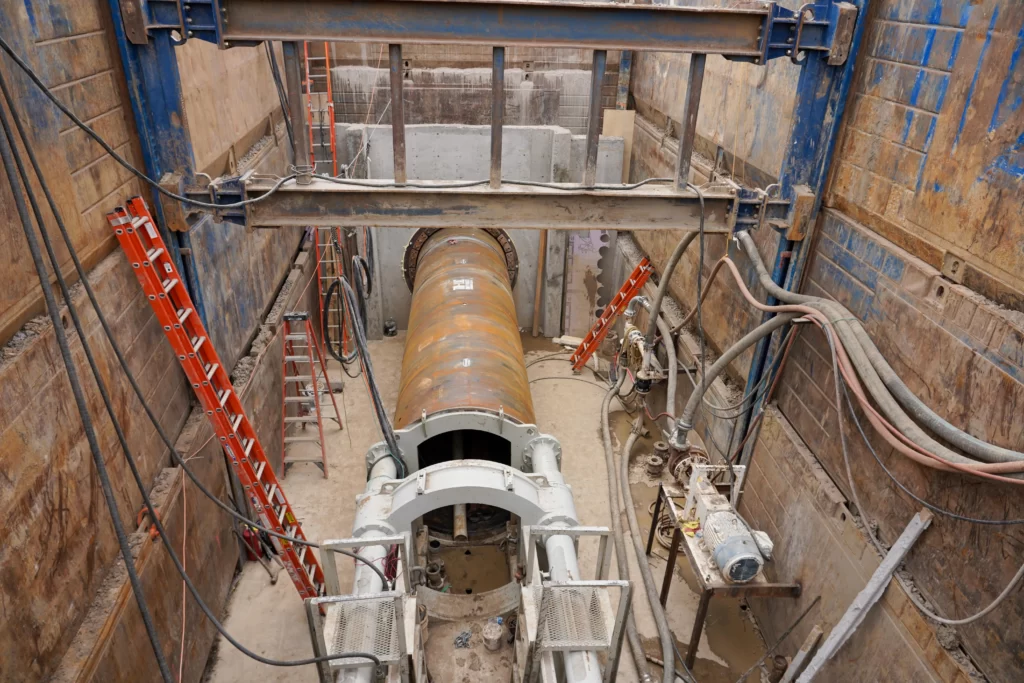
- Underground ducts: would conflict with columns and foundations in construction

7) Arrangement pattern & spatial effect of Service
i) Toilet

- Toilet layout should be in service core
- Toilet block should be near of riser duct
- Block position is located in a place so that people can use it without access in lift lobby
ii) Stair & fire exit
Central Core
- Easily escape for central position & mechanical lighting

Split Core
- More easily escape for split position
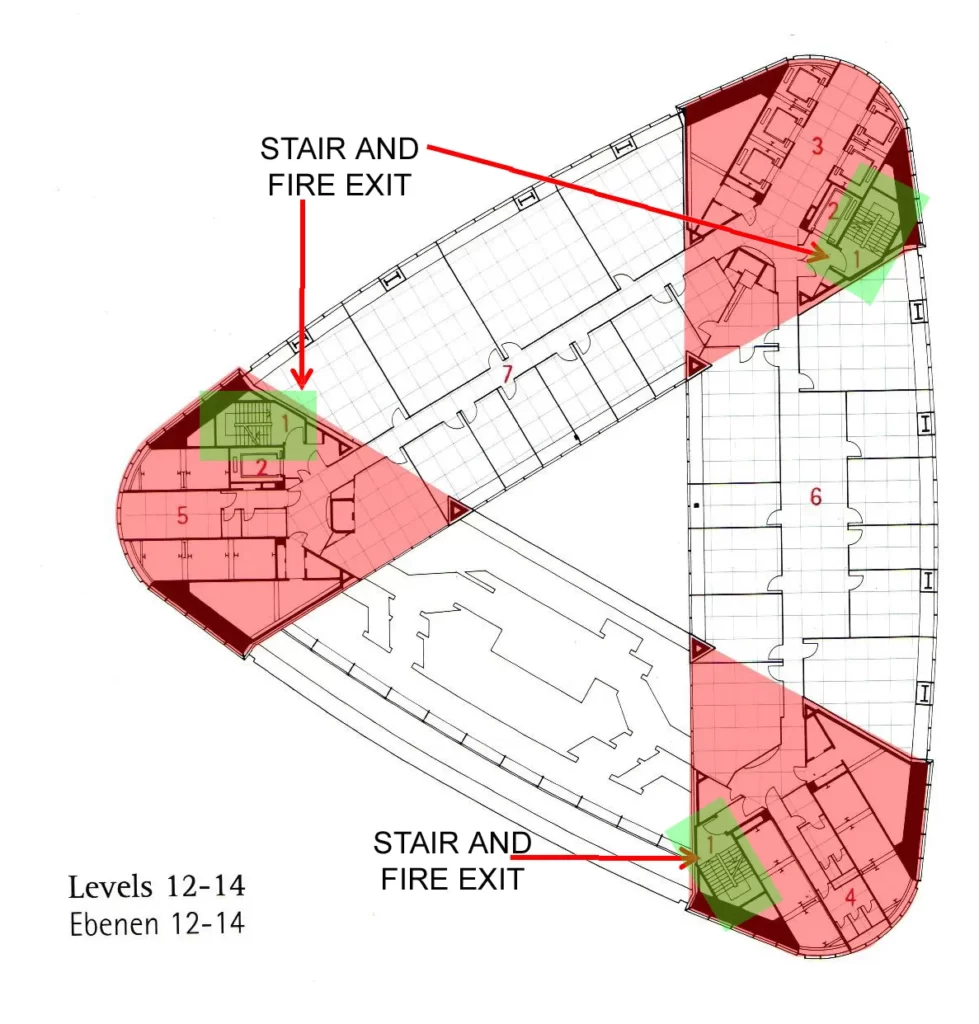
End Core
- Easily escape for end position
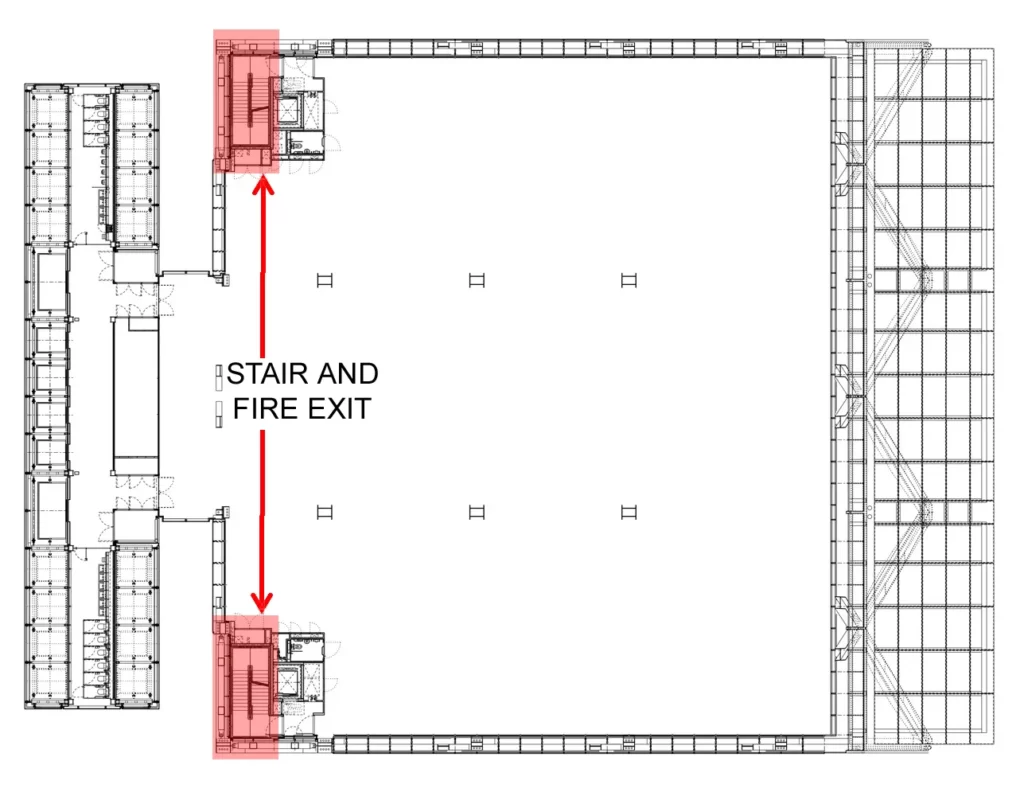
Atrium Core

iii) Service & fire elevator
Central Core

Split Core

End Core
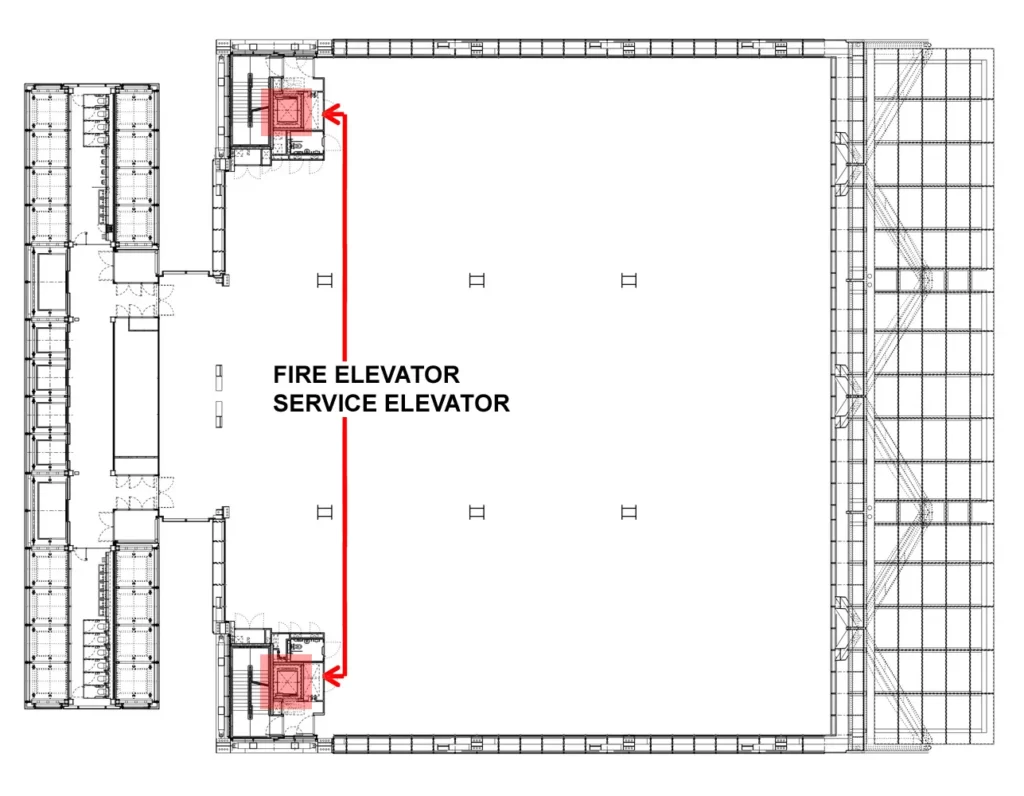
8) Ventilation

Ventilating is the process of replacing air in any space to provide high indoor air quality (to control temperature, replenish oxygen, or remove moisture, odors, smoke, heat, dust, airborne bacteria and carbon dioxide). Ventilation is used to remove unpleasant smells and excessive moisture, introduce outside air, to keep interior building air circulating, and to prevent stagnation of the interior air.
Types of ventilation
- Natural ventilation: occurs when the air in a space is changed with outdoor air without the use of mechanical systems, such as a fan. Most often natural ventilation is assured through operable windows. Open windows or vents are not a good choice for ventilating a basement or other below ground structure. Allowing outside air into a cooler below ground space will cause problems with humidity and condensation.
- Mechanical ventilation: an air handling unit or direct injection to a space by a fan. A local exhaust fan can enhance infiltration or natural ventilation, thus increasing the ventilation air flow rate.
- Mixed Mode Ventilation: both mechanical and natural ventilation processes.

9) Core and ventilation

i) Arrangement pattern & ventilation

ii) Core ventilation and effect


10) Staircase ventilation


11) Fire-fighting lobby ventilation
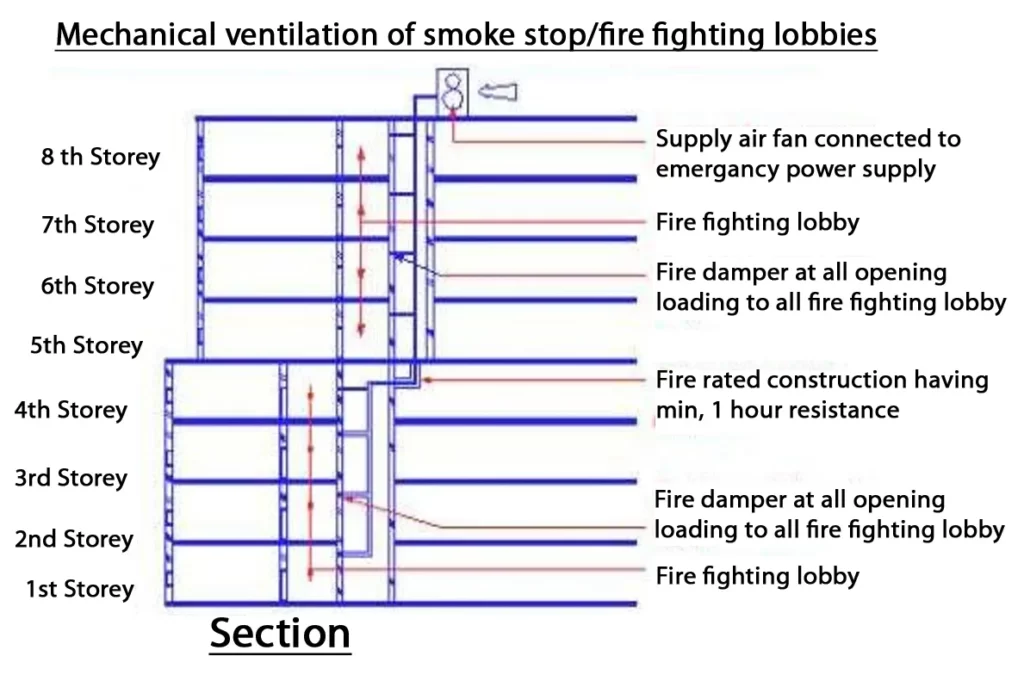
Designing building services for tall buildings requires a multidisciplinary approach that involves architects, engineers, and other professionals with specialized knowledge and expertise in their respective fields. Effective coordination and communication among team members are essential for ensuring that all building services work seamlessly together and are optimized for the specific requirements of the building.
This is a very vital piece of professional and educational information.